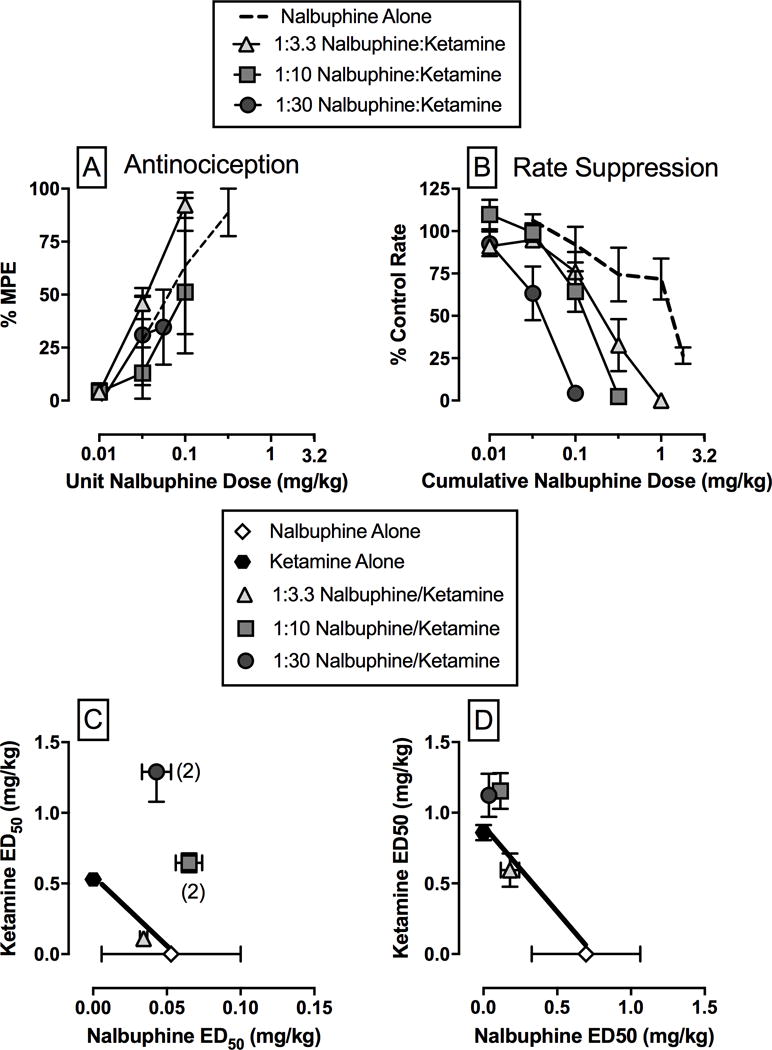Figure 2.

Effects of the mu-opioid agonist nalbuphine alone or in combination with the noncompetitive NMDA antagonist ketamine on capsaicin-induced thermal allodynia (left panels) and rates of schedule-controlled responding (right panels). Upper panels show dose-effect functions for nalbuphine alone or in combination with ketamine and bottom panels show isobolograms at the ED50 effect level for nalbuphine or ketamine alone or as part of a mixture. Upper horizontal axes: unit nalbuphine dose (left panel) or cumulative nalbuphine dose (right panel) in mg/kg/injection. Upper vertical axes: percent control rate of responding. Lower panels show isobolograms at the ED50 effect level for nalbuphine or ketamine alone or as part of a mixture. Lower horizontal axes: ED50 values for nalbuphine alone or in a mixture in milligrams per kilogram (linear scale). Lower vertical axes: ED50 values for ketamine alone or in a mixture in mg/kg (linear scale). Each point represents mean ± SEM of 3–4 monkeys, except when noted by the number in parentheses, which denotes an experimental condition where an ED50 value could not be determined in all subjects tested.
